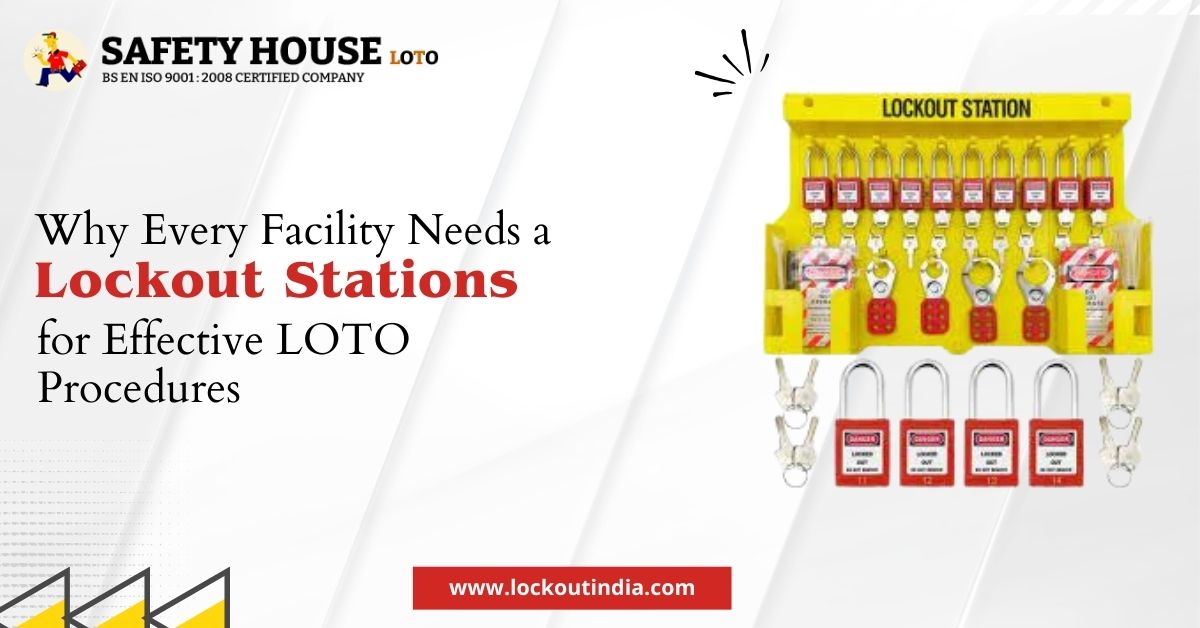
In industrial settings, safety is not just a priority; it’s a necessity. One of the most critical components of workplace safety is implementing proper Lockout/Tagout (LOTO) procedures to protect workers from accidental equipment activation during maintenance or repairs. At the heart of an effective LOTO program lies the lockout station—a centralized solution for organizing and managing LOTO tools and devices. Here’s why every facility should invest in a lockout station to enhance safety, compliance, and operational efficiency.
What is a Lockout Station?
A lockout station is a dedicated hub designed to store lockout tagout devices such as padlocks, tags, lockout hasps, and valve lockouts. These stations are often wall-mounted or portable, providing quick and organized access to the tools needed to isolate and secure machinery during maintenance. By centralizing LOTO equipment, a lockout station simplifies safety procedures and ensures that the necessary devices are always available.
The Role of Lockout Stations in LOTO Procedures
LOTO procedures are designed to protect workers from hazardous energy sources by ensuring that machines are completely powered down and isolated before maintenance begins. Without a lockout station, keeping LOTO tools organized and accessible can be a challenge, leading to delays and potential safety risks. A lockout station eliminates this issue by:
- Centralizing Tools
With all LOTO devices stored in one place, employees save time searching for tools and can focus on safely completing their tasks. - Improving Accessibility
Strategically placed lockout stations allow workers to access devices quickly, especially in emergencies, reducing downtime and maintaining safety. - Enhancing Compliance
Regulations like OSHA’s 1910.147 standard require proper implementation of LOTO procedures. A lockout station helps facilities maintain compliance by promoting organization and consistent use of LOTO devices.
Benefits of Lockout Stations
1. Boosting Workplace Safety
Accidental machine startups can lead to severe injuries or even fatalities. A lockout station ensures that all necessary tools are available to effectively secure equipment, reducing the risk of accidents.
2. Streamlining Operations
Disorganized or missing LOTO devices can slow down maintenance processes and extend equipment downtime. A lockout station keeps everything in order, allowing workers to perform tasks more efficiently.
3. Promoting Accountability
A lockout station often includes slots for each employee’s LOTO devices, making it easier to track who has locked out a machine. This system ensures that procedures are followed and responsibilities are clear.
4. Durability and Customization
Modern lockout stations are made from durable materials like polycarbonate or steel, ensuring long-lasting use in harsh industrial environments. Many stations can also be customized to fit the specific needs of a facility, from accommodating larger devices to featuring multilingual labels for diverse workforces.
Choosing the Right Lockout Station
When selecting a lockout station, consider the following factors:
- Capacity: Ensure the station can hold all required LOTO devices for your facility.
- Portability: Portable lockout stations are ideal for large facilities or sites with multiple maintenance zones.
- Visibility: Brightly colored stations with clear labels improve accessibility and usability.
- Compliance: Choose a station that meets safety standards and supports your LOTO program effectively.
Best Practices for Implementing Lockout Stations
- Strategic Placement
Install lockout stations near high-risk machinery or in maintenance areas to ensure quick access. - Regular Maintenance
Inspect lockout stations periodically to ensure all devices are in good condition and replenish supplies as needed. - Employee Training
Educate workers on the proper use of lockout stations and the importance of following LOTO procedures. - Integration with Safety Programs
Lockout stations should be part of a larger safety program that includes clear policies, regular audits, and management support.
Lockout Stations in Action: A Real-World Example
Consider a manufacturing facility with heavy machinery requiring frequent maintenance. Without an organized lockout station, workers might struggle to find the right tools, leading to delays and increased safety risks. By installing lockout stations in key locations, the facility improved safety, reduced downtime, and achieved compliance with OSHA regulations.
Safety House Loto, a leading lockout supplier, offers a wide range of lockout stations designed to meet the diverse needs of industrial facilities. Their solutions are known for durability, efficiency, and compliance, making them a reliable choice for enhancing workplace safety.
Conclusion
A lockout station is more than just a storage unit—it’s an essential tool for protecting workers and maintaining safety standards in industrial settings. By centralizing and organizing LOTO devices, these stations reduce risks, improve efficiency, and support compliance with safety regulations. Every facility that values safety and efficiency should make lockout stations a core part of its LOTO program.
Investing in a quality lockout station from trusted providers like Safety House Loto ensures that your facility is prepared for maintenance tasks while safeguarding the well-being of employees. With the right tools in place, you can create a safer, more productive workplace for everyone.






Leave a Reply